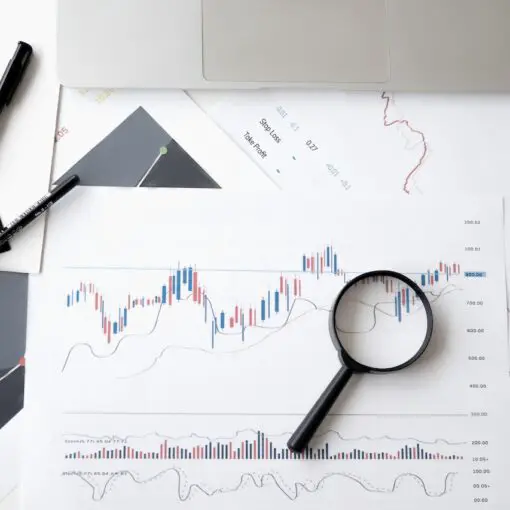In today’s digital age, navigating news and media can be challenging, especially with the prevalence of misinformation. Knowing how to critically evaluate the information presented is essential for making informed decisions.

Critical thinking skills help individuals assess the accuracy, credibility, and biases in news sources. These skills are vital for understanding complex issues and forming well-rounded perspectives. By mastering critical thinking strategies, readers can confidently navigate the vast landscape of news and media.
1) Identify Credible Sources

Finding credible sources is the first step in critical thinking for analyzing news and media. Reliable sources often come from established institutions like universities, government agencies, and reputable news organizations.
Check the author’s credentials. If the author has expertise or a background in the topic, the source is more likely to be trustworthy. Look for information on their profile or biography.
Investigate the website. Reliable sites typically have a professional appearance, contact information, and no excessive ads. Critical thinking involves assessing these aspects to gauge reliability.
Review the content for objectivity. Credible sources present facts and avoid extreme bias. They should provide evidence and avoid sensationalism. Cross-checking information across different sources can also help verify credibility.
Watch out for sponsored content. Articles that are paid for by a company may have a hidden agenda. These pieces might not always be clear about their bias, so it’s essential to be cautious.
Lastly, consider the publication date. Information should be current, especially for fast-changing topics. Old data might no longer be applicable or accurate in the present context.
2) Cross-Check Facts Across Multiple Outlets

Cross-checking facts from different news outlets is essential. It ensures that the information is accurate. Looking at multiple sources helps identify any discrepancies.
Different news organizations have different perspectives. Comparing them can highlight potential biases. This makes the final picture more balanced and fair.
When reading an article, check if it has been reported by other reputable sources. Reliable sources often include major news networks or established publications. Consult several reports on the same event to get a fuller understanding.
Cross-referencing information is also necessary for breaking news. In fast-developing situations, initial reports can contain mistakes. Waiting for confirmation from multiple outlets helps avoid spreading misinformation.
To aid in fact-checking, use tools and websites dedicated to this purpose. Resources like fact-checking organizations can help verify claims made in news articles.
In summary, verifying facts with multiple sources is a key strategy. It helps maintain accuracy and reduces the risk of relying on false information. Various perspectives contribute to a well-rounded view of the news.
3) Evaluate News Headlines Critically
Evaluating news headlines critically is important for assessing the credibility of the article. Headlines can sometimes be misleading or exaggerated. Clickbait headlines are designed to grab attention but might not reflect the content accurately. Always cross-check headlines with the main content to verify that it aligns with the article’s message.
Sometimes, headlines can create a false connection. This happens when the headline suggests something sensational that the article doesn’t support. For example, a headline might mention a dramatic event, but the article itself provides little or no evidence of such an event. Look for consistency between the headline and the information provided.
False context in headlines is another issue to watch out for. This occurs when a headline includes real information but presents it in a misleading way. Even if the information is true, the context might distort its meaning, leading to misinformation. Be mindful of how facts are framed in headlines.
Consider the source of the headline too. Media outlets with a known bias may use sensational headlines to push a particular agenda. Checking multiple sources can help in understanding the true nature of the news. Platforms like Media Bias/Fact Check can be useful for identifying bias in news sources.
By evaluating news headlines critically, individuals can better navigate through misinformation and make informed judgments about the news they consume.
4) Analyze the Tone and Language
The tone and language used in news articles shape how information is received. Tone refers to the writer’s attitude toward the subject. It can be identified through word choice and phrasing.
A serious tone might use formal, straightforward language. On the other hand, a casual tone could include slang or humor. Being able to distinguish these differences is key to understanding the writer’s intent.
Language can reveal bias. For instance, words like “claim” or “allege” can suggest doubt, while “reveal” or “prove” imply certainty. Analyzing adjectives and verbs helps identify slant and objectivity.
The tone may also vary depending on the intended audience. News meant for professionals might use technical language. Articles for general readers often use simpler terms. Recognizing these variations aids in gauging the article’s purpose and target audience.
Pay attention to emotional triggers. Does an article aim to evoke anger, sympathy, or fear? Emotional language can manipulate readers’ reactions. Identifying this helps in maintaining an objective view.
For a deeper understanding of how tone and language affect reading and writing, exploring resources such as Writing for Success can be helpful. This practice enhances critical thinking when analyzing media.
Understanding tone and language ensures a more informed and critical consumption of media. It allows readers to see beyond the surface and question underlying intentions.
5) Question the Use of Visuals
Students should ask if the visuals reflect any bias. Are the images used to persuade or manipulate? For instance, political cartoons or propaganda often bear specific opinions or perspectives that may sway viewers’ thoughts.
Consider if visuals are chosen to evoke strong emotions. Are they meant to shock, inspire, or anger? Understanding the intent behind a visual can help uncover its purpose.
Examine the accuracy of visuals. Are the images current and relevant? For example, using an outdated photo can mislead the audience about present conditions. It’s important to verify the time and context of the visuals.
Students should analyze if the visuals add value to the content. Are they informative and supportive of the text, or are they just decorative? This distinction helps assess the credibility of the material.
Reflect on the sources of the visuals. Are they from reputable providers or random internet searches? Checking the origin of images helps in evaluating their trustworthiness and authenticity.
To explore more about this, see the guide on analyzing visual images. Additionally, frameworks like critical visual analysis offer structured approaches to scrutinize visuals in media.
6) Consider the Source’s Agenda
When analyzing news, it’s important to consider the agenda of the source. Different media outlets have various goals, which can influence their reporting.
First, look at who owns the media outlet. Ownership can affect what stories are covered and how they are presented. Large corporations or individuals with specific interests may sway the content.
Second, pay attention to the source’s history and reputation. Some media organizations are known for particular biases or for supporting certain viewpoints. Knowing this background helps in understanding potential influences on the news.
Third, examine the language and tone used in the reporting. Emotional or loaded language can indicate an attempt to persuade rather than inform. Balanced and neutral reporting is a sign of a more trustworthy source.
Finally, check if the source discloses its funding and affiliations. Transparency in these areas can reveal possible conflicts of interest. Many credible sources openly share their funding, making it easier to assess their reliability.
By keeping these factors in mind, readers can better evaluate the information provided by the media and maintain a more critical perspective. To delve deeper into evaluating news sources, consider visiting Evaluating News Sources.
7) Look for Evidence-Based Reporting
Evidence-based reporting is crucial for determining the reliability of news. It involves presenting facts supported by research, data, and verified sources.
Readers should check if the article references credible studies or expert opinions. For instance, a report might analyze data from a government health agency or quote a university researcher.
It’s also important to see if the information can be cross-verified. Look for other reputable news outlets that report similar findings to ensure consistency.
Quality articles often link to original sources. This transparency helps readers trace the information back to its origin. For example, an article may link to a scientific paper on how scientists use evidence to evaluate claims.
Additionally, scrutinizing the language used can be a helpful indicator. Articles that are evidence-based tend to avoid sensationalism and present balanced viewpoints. This helps in distinguishing factual reporting from propaganda or opinion.
By focusing on these aspects, readers can better navigate through vast amounts of information and make more informed decisions. Evidence-based reporting not only improves the quality of the news consumed but also fosters critical thinking skills.
Understanding Critical Thinking
Critical thinking helps individuals evaluate the accuracy and reliability of news sources. It involves analyzing and questioning information to make informed decisions.
Definition and Importance
Critical thinking is the ability to assess claims, evaluate evidence, and identify biases. In the context of news media, this skill helps individuals determine the credibility of sources and avoid misinformation. Critical thinking involves questioning assumptions and considering different viewpoints. Engaging with diverse perspectives can lead to better understanding and judgment.
The importance of critical thinking cannot be overstated. Societies benefit when citizens can discern credible information from falsehoods. This skill is essential for democracy, as informed citizens can make educated decisions and participate effectively in civic life. Therefore, enhancing critical thinking is key to fostering an informed populace.
Core Concepts and Principles
Several core concepts and principles guide critical thinking. These include analysis, evaluation, and inference. Analysis involves breaking down information into parts to understand its structure. Evaluation is about assessing the credibility and relevance of information. Inference refers to drawing conclusions based on evidence and reasoning.
Other principles include recognizing biases and identifying logical fallacies. Biases can distort perception and lead to incorrect conclusions. Logical fallacies, such as ad hominem attacks or false dichotomies, weaken arguments and mislead audiences. Developing awareness of these concepts strengthens one’s ability to think critically about news and media.
By mastering these principles, individuals are better equipped to navigate the vast array of information available today, ensuring they base their conclusions on solid evidence and sound reasoning.
Identifying Bias and Misinformation
Understanding how to spot bias and misinformation in media helps individuals make informed decisions based on accurate information. It’s essential to recognize common types of bias and verify the credibility of the sources.
Recognizing Common Types of Bias
Bias can appear in many forms, such as political bias, advertising bias, and sensationalism. Political bias happens when news outlets favor one political viewpoint over others. They might slant stories to support their preferred agenda, which can skew public perception.
Advertising bias is when the content is influenced by sponsors or advertisers. For example, media might downplay negative stories about their advertisers to maintain a good relationship. Sensationalism means presenting news in a way that makes it seem more shocking or exciting than it is. This can draw more viewers but often sacrifices accuracy for drama.
Being aware of these biases helps readers critically evaluate the content they consume. Looking for patterns and comparing multiple sources can highlight when bias is at play.
Fact-Checking and Source Verification
Fact-checking is key in combating misinformation. Readers should question the authenticity of the information and the reliability of the authors. Tools like Snopes and FactCheck.org can help verify claims. These platforms investigate and rate the accuracy of various statements and stories.
Source verification is another crucial step. Reliable news often comes from well-known outlets with a history of accurate reporting. For more obscure sources, check their backgrounds and past work. Examine if they cite reputable experts or organizations to back up their information.
Cross-referencing stories with multiple credible sources can offer a more balanced and true picture. This practice ensures the information is not taken out of context or misunderstood.
In summary, recognizing bias and confirming facts help readers navigate the complex media landscape confidently and accurately.
Analyzing Media Content
Understanding media content involves careful evaluation of news sources and applying techniques for critical reading. Both are crucial for determining the credibility and bias of information.
Evaluating News Sources
When evaluating news sources, it is essential to check their history and reputation. Reliable news sources often maintain a track record of accurate and unbiased reporting. Look for expert validation and confirm that the journalist follows strict journalistic standards.
Another key factor is the transparency of the source. Credible sources usually provide clear information about their authors and funding. This helps readers identify potential biases. Cross-referencing information with other reputable sources can also help verify its accuracy.
Consider the domain of the website. Trusted news websites typically use well-known domains such as .edu, .gov, or established .org and .com sites.
Techniques for Critical Reading
Critical reading requires a skeptical and questioning approach. Start by identifying the main argument and the evidence supporting it. Check if the evidence is data-driven, anecdotal, or simply opinion-based. Strong arguments are backed by credible sources and sound evidence.
Look for any noticeable biases in the language and tone used. Biased articles often use emotionally charged words to sway readers’ opinions. Recognize logical fallacies such as ad hominem attacks or false dilemmas that can weaken the argument.
Examine who is being quoted in the article. Are they experts in the field, or do they have a possible bias? Diverse viewpoints in a piece also help in providing a balanced perspective. Always ask who benefits from the information and why it was published.





